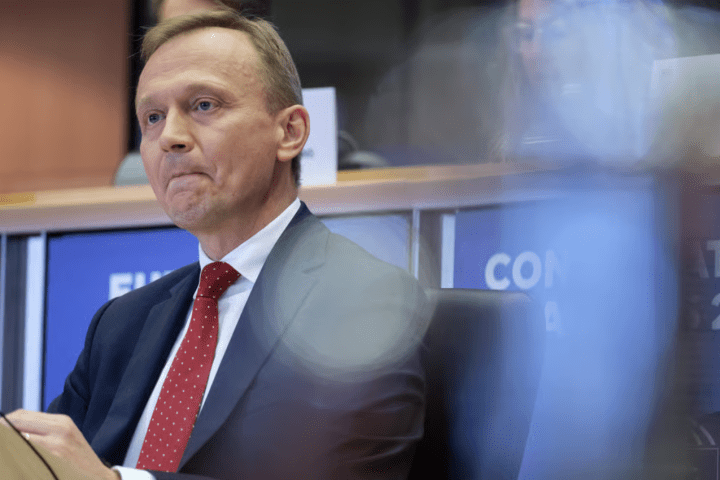In the fast-paced world of cryptocurrency, reliable information can mean the difference between profitable investments and costly mistakes. With hundreds of crypto news outlets competing for attention, distinguishing credible sources from sensationalized content has become increasingly challenging. This comprehensive guide examines the credibility landscape of crypto journalism and provides frameworks for evaluating trustworthy news sources.
The Importance of Credible Crypto News
The cryptocurrency market operates 24/7, with prices and sentiment shifting rapidly based on news developments, regulatory announcements, and market analysis. Unlike traditional financial markets with established reporting standards, the crypto space often lacks standardized journalistic practices, creating an environment where misinformation can spread quickly and influence market behavior.
Credible crypto news sources serve several critical functions including providing accurate market analysis, reporting regulatory developments, investigating security breaches and scams, offering educational content for newcomers, and maintaining editorial independence from commercial interests. The stakes are particularly high in cryptocurrency reporting, where false information can trigger significant price movements, affect investor decisions, and undermine market confidence.
Criteria for Evaluating Crypto News Credibility
Editorial Standards and Fact-Checking
Reputable crypto news outlets maintain rigorous editorial standards similar to traditional financial journalism. These standards include fact-checking processes, source verification, corrections policies, and clear distinctions between news reporting and opinion content. Credible outlets typically employ experienced journalists with backgrounds in finance, technology, or investigative reporting.
The best crypto news sources implement multi-layer fact-checking processes, requiring reporters to verify information through multiple independent sources before publication. They also maintain transparent correction policies, promptly addressing errors and clearly marking updated content.
Source Transparency and Attribution
Trustworthy crypto news outlets prioritize source transparency, clearly attributing information to specific individuals, organizations, or documents. They avoid relying heavily on anonymous sources and, when necessary, provide context about why sources cannot be identified. Credible outlets also distinguish between primary sources (direct quotes, official documents) and secondary sources (other news reports, social media posts).
Quality crypto journalism includes proper attribution for market data, regulatory filings, research reports, and expert opinions. Reporters should identify potential conflicts of interest and provide readers with sufficient information to evaluate source credibility independently.
Independence from Commercial Interests
Editorial independence represents a crucial factor in determining news outlet credibility. The most trustworthy crypto news sources maintain clear separation between editorial content and advertising, avoid accepting payment for positive coverage, and disclose any financial relationships with covered companies. They also implement policies preventing reporters from trading cryptocurrencies they cover and require disclosure of any token holdings.
Commercial pressures in the crypto industry can be intense, with projects offering substantial payment for favorable coverage. Credible outlets resist these pressures and maintain editorial integrity even when it means forgoing potential revenue opportunities.
Tier 1: Highly Credible Sources
Established Financial Media
Traditional financial news organizations that have expanded into cryptocurrency coverage often bring established journalistic standards to the crypto space. These outlets typically employ experienced financial reporters, maintain strict editorial policies, and have reputations to protect beyond the crypto industry.
Major financial publications with strong crypto coverage include comprehensive market analysis, regulatory reporting, and investigative pieces that hold the industry accountable. Their cryptocurrency coverage benefits from established newsroom infrastructure, legal teams, and editorial oversight that newer crypto-focused outlets may lack.
Specialized Crypto Publications with Strong Standards
Several crypto-focused publications have established themselves as credible sources through consistent application of journalistic standards. These outlets combine deep industry knowledge with professional reporting practices, offering both breaking news and in-depth analysis.
The most credible specialized crypto outlets employ reporters with relevant experience, maintain transparent correction policies, and regularly produce investigative content that challenges industry narratives. They balance technical accuracy with accessibility, helping readers understand complex blockchain concepts and market dynamics.
Regulatory and Official Sources
Government agencies, central banks, and regulatory bodies provide authoritative information about cryptocurrency policy and enforcement actions. While these sources may lack market analysis, they offer definitive information about regulatory developments that significantly impact the crypto industry.
Primary regulatory sources include official press releases, policy documents, enforcement actions, and public statements from regulatory officials. These sources provide the most reliable information about government positions on cryptocurrency regulation and compliance requirements.
Tier 2: Generally Reliable Sources
Industry Publications with Good Track Records
Several crypto news outlets have developed solid reputations through consistent, accurate reporting over multiple market cycles. While they may occasionally prioritize speed over thorough verification, they generally maintain reasonable journalistic standards and provide valuable market insights.
These publications often excel in specific areas such as technical analysis, market commentary, or industry trends. They may have stronger industry connections than traditional financial media, providing unique insights into development projects and market sentiment.
Academic and Research Institutions
Universities, research institutions, and think tanks increasingly publish cryptocurrency-related content that combines academic rigor with practical insights. While these sources may lack the immediacy of daily news outlets, they often provide valuable long-term perspective and analytical depth.
Academic sources excel in areas such as blockchain technology research, economic analysis of cryptocurrency markets, and policy recommendations. Their work undergoes peer review processes that enhance credibility, though publication timelines may limit relevance for immediate investment decisions.
Tier 3: Proceed with Caution
Content Marketing Disguised as News
Many websites in the crypto space blur the lines between news reporting and content marketing. These outlets may provide accurate information but often have commercial motivations that influence editorial decisions. Readers should approach such sources with awareness of potential bias and verify important information through independent sources.
Signs of content marketing include excessive promotion of specific projects, lack of critical analysis, and integration of promotional content within news articles. While these sources may provide useful information, they require careful evaluation and cross-referencing with more independent sources.
Social Media and Influencer Content
Cryptocurrency influencers and social media accounts can provide valuable insights and real-time market commentary, but they generally lack the editorial oversight and fact-checking processes of professional news outlets. The quality and credibility of social media sources vary dramatically, requiring careful evaluation of individual accounts and content.
The most credible crypto influencers disclose their holdings, provide transparent analysis, and acknowledge when they’re speculating rather than reporting facts. However, even well-intentioned influencers may lack the resources and expertise to thoroughly verify information before sharing.
Red Flags and Warning Signs
Sensationalized Headlines and Price Predictions
Credible crypto news outlets avoid sensationalized headlines designed to generate clicks rather than inform readers. Headlines promising specific price targets, “guaranteed” profits, or dramatic market predictions often indicate low editorial standards and commercial motivations.
Quality crypto journalism focuses on providing context and analysis rather than making bold predictions. Reputable outlets acknowledge uncertainty in volatile markets and avoid presenting speculation as factual reporting.
Lack of Author Attribution
Articles without clear author attribution raise credibility concerns, as they prevent readers from evaluating reporter credentials and track records. Anonymous reporting may occasionally be necessary for sensitive topics, but routine use of unattributed content suggests poor editorial standards.
Credible outlets provide author information, including relevant experience and expertise. They also maintain consistency in reporting quality across different contributors, suggesting effective editorial oversight.
Inadequate Source Documentation
News articles that make significant claims without providing adequate source documentation should be viewed skeptically. Quality crypto journalism includes links to primary sources, quotes from identified experts, and references to supporting data or research.
Poor source documentation may indicate lazy reporting, commercial bias, or attempt to hide weak foundations for reported claims. Readers should prioritize outlets that provide transparent sourcing and enable independent verification of reported information.
Building Your Information Diet
Diversifying News Sources
Effective crypto news consumption requires diversifying sources across different types of outlets and perspectives. Combining traditional financial media, specialized crypto publications, regulatory sources, and industry analysis provides more comprehensive market understanding than relying on single sources.
A balanced information diet includes both breaking news sources for immediate market developments and analytical sources for deeper understanding of trends and implications. Regular consumption of diverse perspectives helps identify potential bias and provides more complete market picture.
Developing Critical Reading Skills
Successful crypto investors develop critical reading skills that help them evaluate information quality and identify potential bias. These skills include distinguishing between reporting and opinion content, evaluating source credibility and motivation, cross-referencing important claims across multiple outlets, and understanding the difference between correlation and causation in market analysis.
Critical readers also recognize their own confirmation bias tendencies and actively seek out perspectives that challenge their existing beliefs and investment positions.
Verification Strategies
Important investment decisions should never rely on single news sources, regardless of their credibility. Effective verification strategies include checking multiple independent sources, consulting primary documentation when available, seeking expert analysis from qualified professionals, and allowing time for initial reports to be confirmed or corrected.
For breaking news that could significantly impact investment decisions, patience often proves valuable as initial reports may contain errors or incomplete information that subsequent reporting clarifies or corrects.
The Future of Crypto Journalism
The cryptocurrency journalism landscape continues evolving as the industry matures and regulatory frameworks develop. Established media organizations are investing more resources in crypto coverage, while specialized outlets are implementing more rigorous editorial standards to compete for credibility.
Technological developments may also impact crypto journalism, with blockchain-based verification systems potentially providing new tools for ensuring information accuracy and preventing manipulation. However, fundamental journalistic principles of accuracy, independence, and transparency will remain crucial for maintaining credibility.
Conclusion
Navigating the crypto news landscape requires understanding that not all sources provide equal value or credibility. The most reliable information typically comes from outlets that maintain traditional journalistic standards while developing expertise in cryptocurrency and blockchain technology.
Successful crypto investors develop diverse information diets that combine multiple credible sources, apply critical reading skills, and verify important information through independent research. While perfect information sources don’t exist, understanding credibility factors and red flags helps investors make more informed decisions in this dynamic and often unpredictable market.
The key to effective crypto news consumption lies in maintaining healthy skepticism while staying informed about market developments. By prioritizing credible sources and developing critical evaluation skills, investors can better navigate the complex information environment that defines the cryptocurrency ecosystem.
Remember that even the most credible news sources can make mistakes or miss important developments. The best approach combines reliance on trustworthy outlets with independent research, professional advice when appropriate, and recognition that no single source provides complete market understanding.












